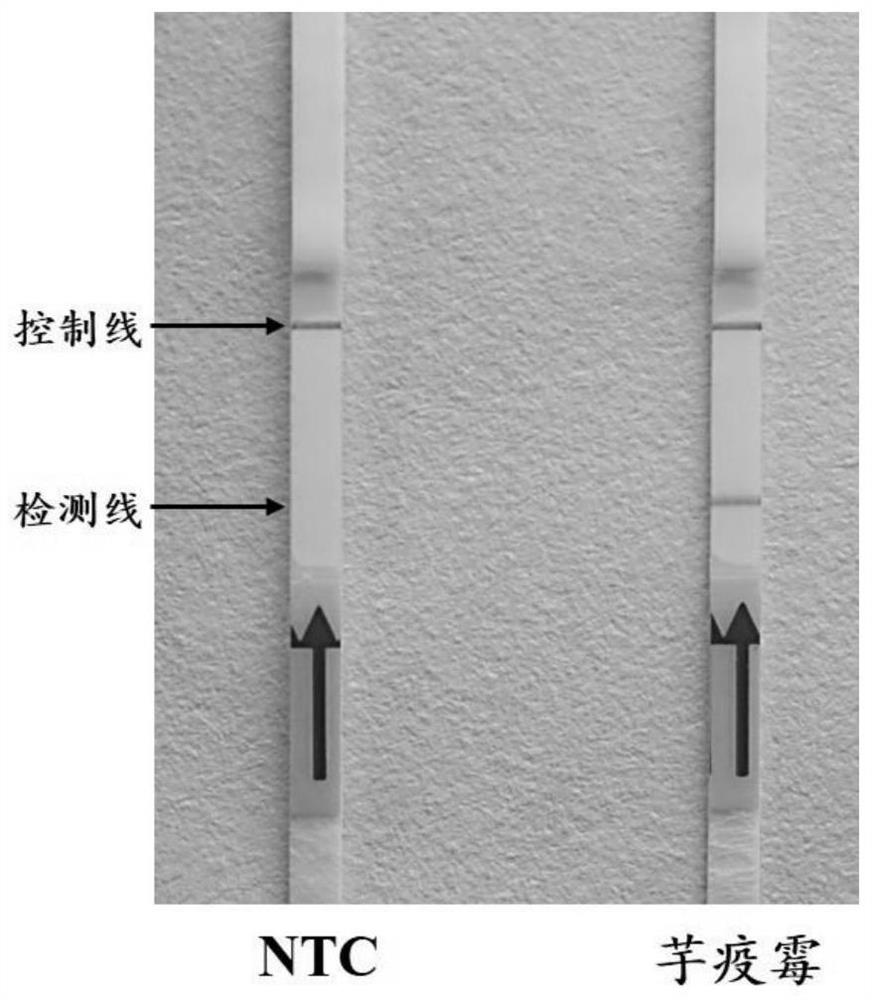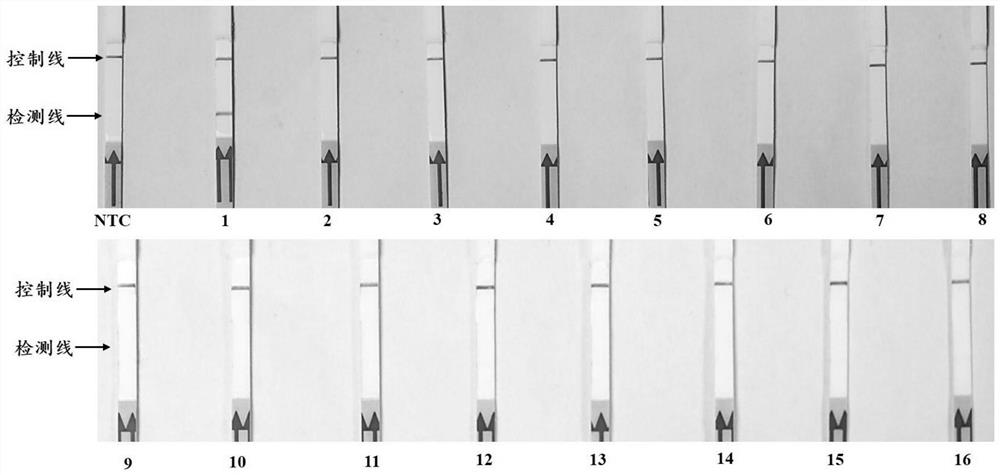LFD-RPA primer and probe combination for visually detecting phytophthora colocasia and detection method thereof
A technology of LF-RPA and detection primers, applied in the biological field, can solve problems such as no relevant application reports, and achieve the effects of good amplification effect, good practicability and strong band specificity
- Summary
- Abstract
- Description
- Claims
- Application Information
AI Technical Summary
Problems solved by technology
Method used
Image
Examples
Embodiment 1
[0044] Embodiment 1 Phytophthora taro LFD-RPA detects the design of primers and probes
[0045] (1) Acquisition of Ypt gene from Phytophthora colocasiae Racib.
[0046] ① Extraction of Genomic DNA from Phytophthora taro
[0047] Adopt CTAB method to extract Phytophthora taro genome DNA, concrete process is as follows: get the mycelia powder after 50mg freeze-drying in 1.5ml centrifuge tube, add 900 μ l 2% CTAB (hexadecyltrimethylammonium bromide) extraction solution ( 2% CTAB; 100mmol / LTris-HCl (tris-hydroxymethylaminomethane hydrochloride), pH 8.0; 20mmol / L EDTA (disodium ethylenediaminetetraacetic acid), pH 8.0; 1.4mol / L NaCl) and 90μl 10% SDS (sodium dodecylbenzenesulfonate) and mix well, put in water bath at 55~60℃ for 1.5h, shake and mix once every 10min, centrifuge (12,000rpm) for 15min after 1.5h in water bath, take the supernatant and add Phenol / chloroform / isoamyl alcohol (the volume ratio of phenol, chloroform and isoamyl alcohol is 25:24:1) equal to the volume of t...
Embodiment 2
[0062] Example 2Visual detection of LFD-RPA primer and probe combination to Phytophthora taro
[0063] (1) Extraction of Phytophthora taro Genomic DNA:
[0064] Genomic DNA of Phytophthora taro was extracted by the CTAB method in Example 1, and the DNA concentration was detected by an ultraviolet spectrophotometer and diluted to 100 ng / μl for use.
[0065] (2) LFD-RPA reaction system: the reaction system is 50 μl, including 29.5 μl reaction buffer (Rehydration buffer), 10 μM PcoRPALFD-F and 2.1 μl biotin-labeled PcoRPALFD-R, 10 μM PcoRPALFD-P 0.6 μl probe, to be Measure template DNA 2.0 μl, sterile double distilled water 11.2 μl, mix the above components and add to RPA freeze-dried enzyme powder, then add 2.5 μl 280mM magnesium acetate (MgAc) and mix upside down; replace the template DNA with ddH 2 O was used as a negative control.
[0066] (3) LFD-RPA reaction: Incubate the reaction system in step (2) at 39°C for 5 minutes, mix the reaction tube again, and continue to incu...
Embodiment 3
[0069] Embodiment 3 LFD-RPA primer and probe combination are to the specific amplification of Phytophthora taro
[0070] Using 22 strains of Phytophthora taro and 15 other pathogenic fungi and oomycetes from Fujian, Jiangxi and Guangxi in my country as test materials, the specificity of the detection primers and probes was verified by LFD-RPA.
[0071] (1) Tested strains
[0072] serial number species name the host source Number of strains 1 Phytophthora colocasiae Racib. Colocasia esculenta Fujian 15 2 Phytophthora colocasiae Racib. Colocasia esculenta Jiangxi 3 3 Phytophthora colocasiae Racib. Colocasia esculenta Guangxi 4 4 Phytophthora capsici P.capsici Pepper Capsicum frutescent Fujian 1 5 P.cactorum Apple Malus pumila Shaanxi 1 6 Phytophthora infestans P.infestans Potato Solanum tuberosum Fujian 1 7 Phytophthora sojae P.sojae Soy Glycine max Fujian 1 8 Peronophythora litch...
PUM
 Login to View More
Login to View More Abstract
Description
Claims
Application Information
 Login to View More
Login to View More - R&D
- Intellectual Property
- Life Sciences
- Materials
- Tech Scout
- Unparalleled Data Quality
- Higher Quality Content
- 60% Fewer Hallucinations
Browse by: Latest US Patents, China's latest patents, Technical Efficacy Thesaurus, Application Domain, Technology Topic, Popular Technical Reports.
© 2025 PatSnap. All rights reserved.Legal|Privacy policy|Modern Slavery Act Transparency Statement|Sitemap|About US| Contact US: help@patsnap.com



